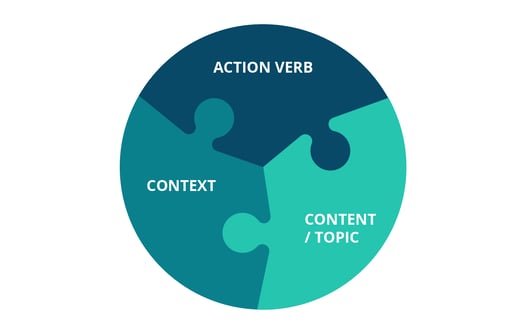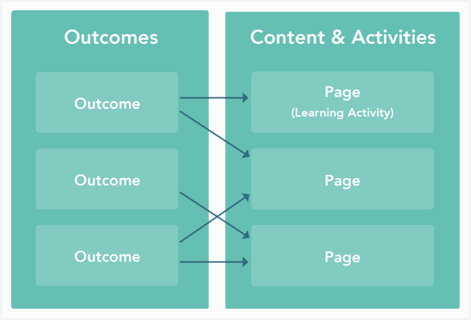Where do you take learners if you don’t know where you want them to go?
A course without learning outcomes is a lot like travelling without a destination. You may get to where you need to be in the end, but the journey could be long, tiresome and ineffectual. Or, you may not even get there.
Having learning outcomes ensures your course has a clear purpose and direction for learners to take so they can achieve specific goals. They also play a crucial, convincing role in selling your online course.
Without goals and plans to reach them, you are like a ship that has set sail with no destination.
- Fitzhugh Dodson
Course learning outcomes are statements that describe what learners will be able to demonstrate by the end of your course.
For example, in a course on Sustainable Thinking, some useful learning outcomes could be:
Learning outcomes should drive course design and learner assessment.
If learning outcomes are the goals of the course, your content and activities should be geared towards learners developing those skills, knowledge and understanding.
Ask yourself,
Assessments should also address these outcomes.
Writing learning outcomes can be tricky work but they will give your course direction and allow you to decide which information and activities to include.
An easy way to create a learning outcome is by breaking it down into three parts:

Your action verb describes what you want your learners to be able to do or demonstrate. We recommend Googling Bloom's Taxonomy verbs (and focusing on the higher-order thinking levels like creating, evaluating and analysing).
Avoid using verbs that are murky, hard to measure or passive, such as:
Learning outcomes can also be ordered so they increase in complexity and provide learners a roadmap of their learning journey.
Remember, learning outcomes should be learner-centred, specific and measurable. learners should be able read these statements, understand what is expected of them and assess whether they have met the goals of the course.
You can add learning outcomes on the Outcomes page located under Course Design > Course Builder in the sidebar.
These outcomes will appear on your course landing page before learners sign up and you can add as many as you need.

Click here for step by step instructions on adding learning outcomes.
You can either add your own learning outcomes, or use the AI Assistant to suggest learning outcomes based on your chosen framework (e.g. Bloom's Taxonomy, SOLO Taxonomy, and more).
Each outcome also requires you to specify an outcome tag. These are shortened versions of the outcomes, which you can use to tag course content, activities and learner posts with the relevant course outcome.
Add them to pages throughout the course to reflect alignment between learning activities and outcomes. (i.e. what you're learning about on a page relates to a learning outcome).
Adding tags on every activity also allows learners to see which outcome they are working on in a transparent way.

Click here for step by step instructions on using outcome tags.
These outcome tags can also be used to tag activities where learners demonstrate a learning outcome.
Tagged learner work can then appear in assessment reports as evidence of their learning and be evaluated.
By using outcome tags throughout your course, you can ensure that all of your activities align with what you want your learners to achieve.

What is your experience with setting your course learning outcomes and activities? Feel free to share your thoughts and experiences.
